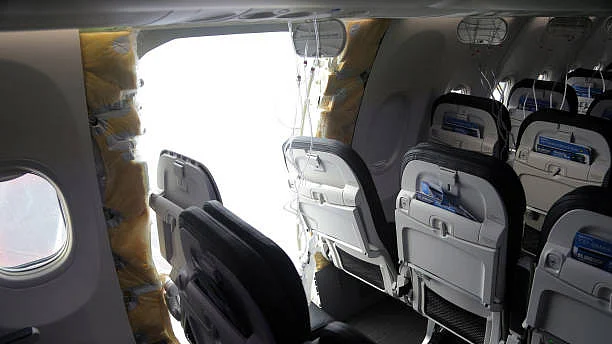FAA Chief Vows To Hold Boeing Accountable For Quality Lapses
The Federal Aviation Administration’s top official will pledge to hold Boeing Co. accountable for any quality lapses as the agency examines the US planemaker’s manufacturing processes following a near-disaster on an Alaska Airlines flight last month.

(Bloomberg) -- The Federal Aviation Administration’s top official pledged to hold Boeing Co. accountable for any quality lapses as the agency examines the US planemaker’s manufacturing processes following a near-disaster on an Alaska Airlines flight last month.
“The events of Jan. 5 really created two issues for us, one is what’s wrong with this airplane, but two, what’s going on with the production at Boeing,” FAA Administrator Mike Whitaker told lawmakers Tuesday on Capitol Hill. “There have been issues in the past and they don’t seem to be getting resolved so we feel like we need to have a heightened level of oversight to really get after that.”

He added that the agency will have “more boots on the ground” to monitor Boeing’s factories, saying the FAA “will consider the full extent of our enforcement authority to ensure Boeing is held accountable for any non-compliance.”
Whitaker, who took the helm in October, testified before the House Transportation and Infrastructure Committee. The mid-air structural blowout on the Boeing 737 Max 9 has dominated his tenure to date, leading the agency to step up its scrutiny of Boeing and its suppliers, and to bar the planemaker from increasing deliveries until quality improves.
The agency expects to have enough data from an investigation launched after the accident to make initial recommendations as soon as late February, the FAA said on Monday.
Boeing has had a series of manufacturing glitches with the Max through 2023 which culminated in the near-catastrophic panel blowout on the Max 9 on Jan. 5. The National Transportation Safety Board is probing the cause of the failure, and its preliminary report will be released later on Tuesday.
This past weekend, Boeing found more mistakes with holes drilled into the fuselage of its 737 Max jets, threatening to slow deliveries further. Shares of the planemaker have declined 21% this year through Monday, the biggest drop among members of the Dow Jones Industrial Average. They rose less than 1% at 11:09 a.m. in New York.
The FAA plans to expand its oversight to include both audits and inspections, and was moving inspectors into manufacturing facilities, Whitaker said. He anticipates that additional FAA personnel will maintain a longer-term presence at Boeing’s 737 Max factories, although no final decisions have been made.
Whitaker said he plans to hold a discussion Wednesday with senior leadership from major US airlines on how they “share information more transparently to improve our safety management system.” The agency is working on how it can improve data accessibility, since it will be “crucial to identifying and mitigating significant risks and emerging safety trends,” he said.
A former airline executive, Whitaker worked to modernize the US air-traffic control system in a previous FAA stint that ended in 2016. He now faces a grilling by lawmakers on his agency’s oversight of Boeing, which was stepped up after the 737 Max model was involved in two fatal crashes in 2018 and 2019.
He told lawmakers that the FAA is encouraging Boeing employees to “use our FAA hotline to report any safety concerns.”
Whitaker also discussed safety concerns including close calls, serious runway incursions and air traffic controller workforce issues. An independent safety review team made a number of recommendations last year, including working to reduce ATC staff shortages. It said outdated technology was one of the biggest risks to safety.
The FAA is committed to deploying technologies to improve surface surveillance and situational awareness for controllers, flight crews and ground personnel, including through “surface lighting, visual and aural alerts, and enhanced displays,” Whitaker said.
--With assistance from Charlotte Ryan and Lillianna Byington.
(Updates with comments from FAA chief throughout)
More stories like this are available on bloomberg.com
©2024 Bloomberg L.P.